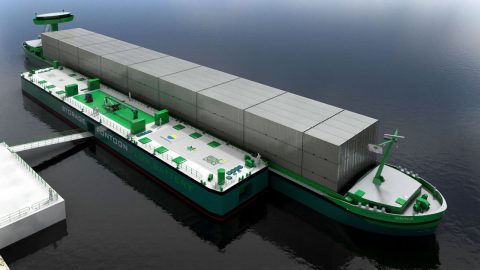
Electrifying Dutch inland shipping with flow batteries
The road to eliminating emissions from maritime transport has many lanes and one of these is switching to electric propulsion. The inland shipping sector in the Netherlands is making its contribution to the cause by transitioning to electric power.
Within the Dutch transport sector, inland shipping is responsible for 5 per cent of carbon emissions. The transition would therefore make a substantial contribution to more sustainable shipping. To that cause, the Port of Rotterdam Authority and inland shipping operator PortLiner have signed a contract to build a charging and storage pontoon for flow batteries in the Hatelkanaal.
From this bunkering station, PortLiner will supply electrically powered inland vessels with flow batteries. Construction is set to begin in the fourth quarter of this year, with the completion of the Netherlands’ first electrolyte bunkering station expected in the first quarter of 2024.
Battery innovation
Due to growing demand for electrically powered inland vessels, PortLiner has decided to expand its operations in the Port of Rotterdam by constructing the electrolyte bunkering station. The Hartelkanaal was chosen as the site in the port of Rotterdam. The pontoon is to be supplied with green power (wind energy) from Greenchoice’s adjacent wind farm.
Together with partners Vattenfall and Greenchoice, PortLiner has developed an innovative concept for zero-emission shipping based on flow batteries. In flow batteries, electricity is charged in a liquid (electrolyte). On board a ship, the electricity is then extracted from the liquid and used to propel the ship. The discharged electrolyte is then exchanged for a charged electrolyte and the discharged electrolyte is recharged.
You just read one of our premium articles free of charge
Want full access? Take advantage of our exclusive offer




